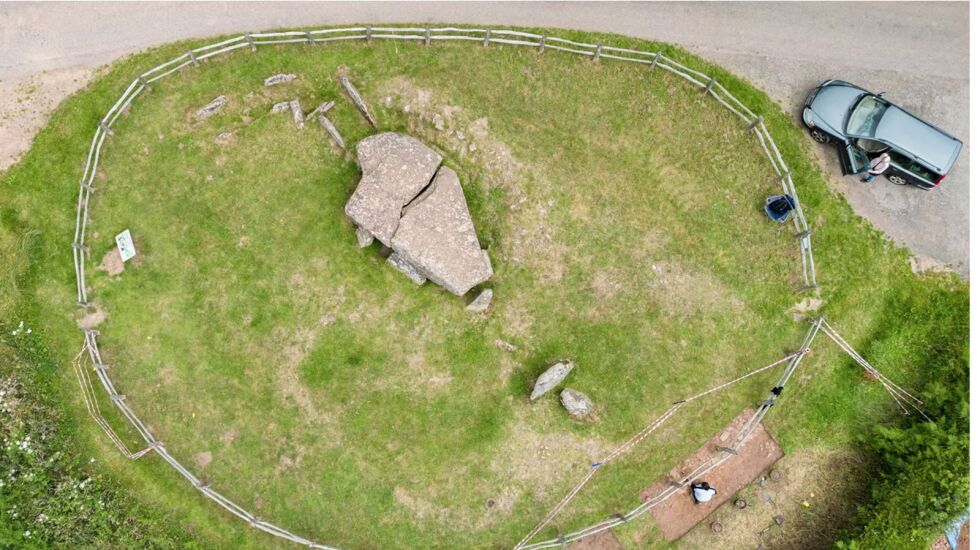
Some say King Arthur slayed a giant there. Others say he knelt in prayer and that, as a result, his knee print indentations are forever etched into the stone.
Now, archaeologists are trying out to find out just how big what’s been dubbed Arthur’s Stone is — and what really happened at the 5,000-year-old, Neolithic Era, chambered tomb in Herefordshire, England, near the border of Wales.
On July 1, a team of researchers began excavating the site, according to Julian Thomas, an archaeology professor at the University of Manchester who’s leading the project.
After looking at previous sites in the area, Thomas and other researchers realized there was likely much more activity there than they initially thought.
“We found that there were more expansive traces of the monument,” Thomas said.
He said his team has found evidence of “a small, low-turf mound with a timber palisade around it” and traces of an “avenue of upright timbers in a series of post holes” that could indicate the presence of a ceremonial path leading to the monument.
“What we have is evidence of the fact that these people were here way before it was originally reported to be,” said Mary Elizabeth Ong, another member of the team.
Arthur’s Stone was built around 3,700 B.C., at the beginning of the Neolithic period, and has sparked tales passed down over many generations, Thomas said.
The period when it was built was a time “of great change in this country, when domesticated plants and animals were being introduced for the first time,” he said. ”We have a whole series of these various kinds of megalithic tombs and long barrows, which are the funerary monuments of this period.”
Thomas said that when people see photos of Arthur’s Stone, they’re looking at the chamber — a large capstone that weighs about 25 tons and is about 30 feet long and seven feet wide. Held up on a series of upright stones, it’s just one part of a mound that’s at least 100 feet long, Thomas said.
“That chamber is set within a very much larger mound,” he said. “It is possible that there were other chambers in that mound.”
He said the team isn’t interfering with any human remains.
“We’re certainly not, in any sense, grave-robbers or trying to mess around with any human remains that may have been deposited here at any point,” he said.
The team includes about 55 people, including Ong, 20, who goes to El Camino College in California. She joined the project through the the Institute for Field Research, a nonprofit that helps students get fieldwork training.
“I worked on the trenches and cleaned and basically dug a little deeper on what was surrounding Arthur’s Stone,” she said. “We found modern stones, and, by removing them, we were able to see the soil underneath, which is covered in quartz. There may be a mound underneath the Neolithic stone.”
Read more at USA Today.







